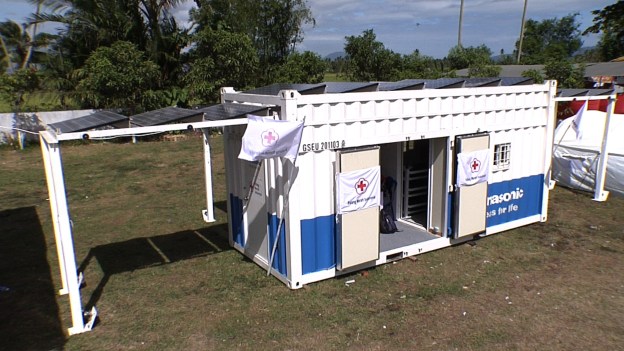
At an Indonesian Red Cross Society event last week, Panasonic rolled out its “Life Innovation Container,” a shippable solar power plant aimed at off-grid use and disaster relief. Actually designed like a shipping container, the giant metal box features expanding solar panels and a massive amount of battery storage. Panasonic claims the plant can be delivered fully charged to stricken areas and provide power for three days without sunlight.
The plant uses 18 high-efficiency HIT solar modules to charge an array of 48 lead batteries. The whole shebang generates an average of 6.7 kWh. In a disaster zone, that’s enough power to run a command and information center fully equipped with laptops, data connections and, as Panasonic slyly showcased at the Indonesian event, slick flat-screen televisions – for informational purposes, of course.
As a power source for off-grid areas, the LIC’s claimed output is enough to light up, say, around 260 25-watt compact fluorescent bulbs. While the unit’s utility in disaster relief is obvious, it’s as a power source for out-of-the-way places that the LIC is most intriguing. With the developing world ever-hungrier for power, this unit offers an alternate to a niche previously dominated (if not owned outright) by diesel generators. Being solar and easily delivered by ship, train or rail, Panasonic has created an interesting power solution that’s clean and, possibly more importantly for truly remote areas, doesn’t require regular fuel deliveries.
The question is whether or not this unit can provide the sustained high output of a fossil fuel generator. At the very least, Panasonic put a lot of emphasis on energy storage, and the unit has been successfully used in Japan’s post-tsunami relief efforts. And with energy demand outstripping power grid expansion in much of the developing world, this type of modular power production will become increasingly important.


